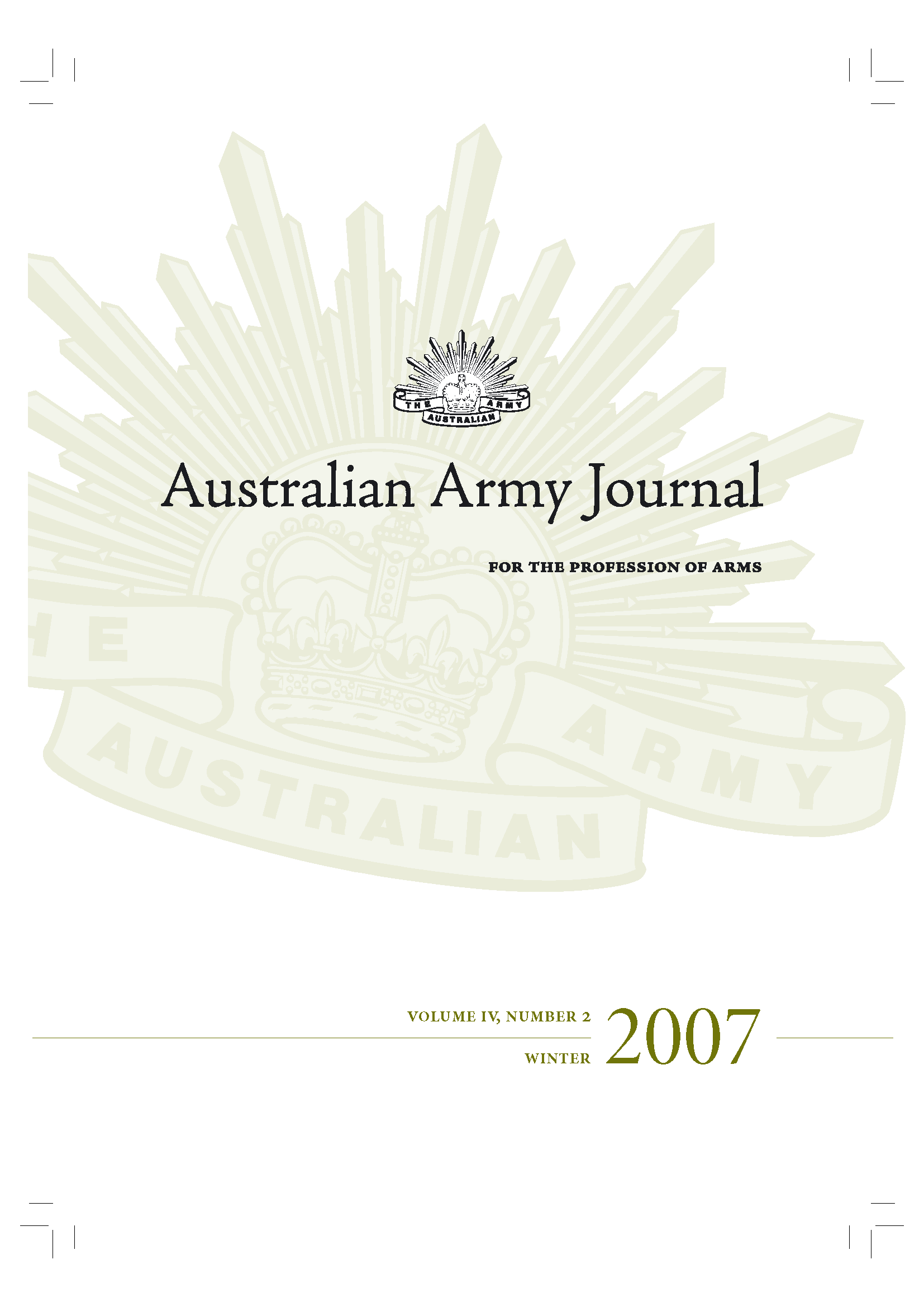THE PAST IS PROLOGUE
This edition of the Australian Army Journal maintains our focus on the diverse operations in which our soldiers are currently engaged. Although we have eschewed the practice of publishing editions of this Journal with a unifying thematic approach, there is an inevitable pattern emerging as more of our officers and soldiers write about their recent operational experience. In particular in this edition Colonels Marcus Fielding and John Hutcheson and Lieutenant Colonel Mick Ryan cover the gamut of operations from Iraq and Afghanistan to the Solomon Islands and East Timor, with an emphasis on the complexities of operations on the ‘Third Block’ of the so-called ‘Three Block War.’ These articles are especially salient as most of our readers have served or will serve in these environments in the near future.
Stabilisation and post-conflict operations warrant considerable attention, though these terms themselves are inadequate—if not misleading—in describing the hazards and complexities involved in providing security both to forces engaged in reconstruction tasks and supporting civilian populations. Army can draw some comfort from the fact that its leadership and planners predicted the emergence of this type of environment in time to align our doctrine and training to the threat. Moreover, it is clear that the nature of the threat environment that Army has predicted reflects the latest official guidance form the Government of Australia in Defence Update 2007 – Australia’s National Security. The Update emphasises the intersection of security threats such as terrorism, fragile states and proliferation of weapons of mass destruction (WMD) both within our immediate region and further afield. It has endorsed a larger, better-protected and more rapidly deployable Army as part of the whole-of-government response to these challenges.
Through concepts such as Complex Warfighting and Adaptive Campaigning the Army Futures community has provided the intellectual framework to permit our officers and soldiers to train to meet novel threats. Nonetheless we cannot afford to be smug or complacent. Our enemies in Iraq and Afghanistan are highly adaptive and motivated. Our troops are unambiguously engaged in warfare regardless of the terminology that is applied to the nature of their operations.
We hope that other officers with recent experience of operations will reflect on their service and write about it for the benefit of their mates. One of the most obvious advantages of the more frequent publication of this Journal on a predictable scheduled basis is that it permits the timely dissemination of such valuable operational experience to our readers.
We expect that the article by Dr. Peter Stanley, titled ‘What is the Battle for Australia’, will spark considerable debate. The so-called ‘history wars’ have thus far largely neglected our military history. However, there has been recent controversy over the relative significance of the ANZAC legend and the Battles in New Guinea in World War Two. While the Army will never engage in partisan political debate we can never forget that the ‘Past is Prologue.’ None of the strategic debates that generate controversy today are novel. Since Federation contending schools have advanced their theories as to whether military commitments distant from the Australian mainland serve our national interests. We welcome responses to Dr Stanley’s article and request merely that they adhere to the guidelines suggested by the redoubtable E.G. Keogh, whose reflections on the value of applying a critical mind to military history are published in our Retrospect section in this edition.

